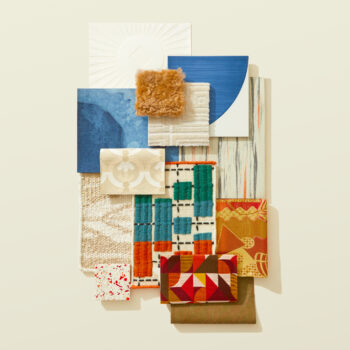
Bold colors and tactile elements create an engaging, stimulating learning environment that fosters creativity and concentration. Vibrant hues like yellows, blues, and greens energize the space and are strategically chosen to empower learning. Tactile elements, such as textured wall panels, interactive displays, and sensory stations, provide hands-on experiences that boost cognitive development and retention. By appealing to students’ sense of touch, these features encourage exploration and active participation, making abstract concepts more tangible and memorable.
Classroom design has a profound impact on student engagement, learning, and memory retention. Research in psychology and education has consistently shown that environments in which students learn significantly influence their cognitive development and emotional well-being. In recent years, educators and designers have embraced vibrant classroom designs that incorporate bold colors, tactile textures, and thoughtful patterns, all aimed at creating dynamic learning environments. By understanding the psychological effects of these elements, schools can create classrooms that foster creativity, focus, and a deeper connection to the material being taught.
Color plays a crucial role in influencing mood, behavior, and cognitive function. According to research from Elliot and Maier’s 2014 Color Psychology: Effects of Perceiving Color on Psychological Functioning in Humans, colors can have varying effects on students’ emotional states and learning outcomes. Warm colors like red, orange, and yellow evoke feelings of excitement and energy, while cooler tones like blue and green tend to promote calmness and concentration. In a vibrant classroom, color is used intentionally to stimulate learning. Accent walls in shades of blue or green create a calming backdrop for concentration, while splashes of yellow and orange can be strategically applied to areas for creativity and group work. Additional research has shown that too much of a single, intense color, such as red, can increase stress levels. It is important to balance bright, energetic colors with more neutral tones like white, beige, or soft grays.
Incorporating tactile elements into classroom design enhances students’ learning experiences by encouraging hands-on interaction and exploration. Studies have shown that tactile learning, or kinesthetic learning, can be especially effective for younger children and students with learning differences. According the VARK model (Visual, Auditory, Reading/Writing, Kinesthetic) by Neil Fleming, students who are given the opportunity to physically manipulate objects during lessons are more likely to retain information and develop problem-solving skills. Tactile elements in the classroom can include textured wall panels, interactive learning stations, and furniture made from diverse materials such as wood, fabric, and metal. For example, using corkboard walls or felt bulletin boards provides a soft texture that invite students to interact with displays. Sensory tables filled with objects like sand, water, or clay encourage younger students to engage in sensory play, which helps develop fine motor skills and enhances learning through exploration.
Classroom furniture can also enhance tactile learning. Chairs and tables with textured surfaces consisting of natural materials like wood mixed with sensory rich textiles can create a more engaging experience for students compared to sterile, smooth plastic furniture. Bean bags, soft rugs, and cushioned seating can be placed in reading corners or relaxation zones to offer a variety of textures that promote comfort.
Patterns also play an important role in classroom design. The brain is wired to recognize and interpret patterns, which can make them a powerful tool in enhancing memory and learning. Research by Dember and Warm (1979) found that moderate levels of visual complexity, such as repetitive patterns, can stimulate cognitive processing without overwhelming the senses. However, overly complex patterns can be distracting, leading to overstimulation and reduced focus. Geometric shapes, simple stripes, or organic patterns create a sense of order and calm, which help students to focus. Using patterns is also a great way to define different zones within the classroom, subtly signaling areas for group work, quiet study, or creative play.
Vibrant classroom design has a rich impact on students’ cognitive and emotional development. Through integrating bold colors that influence mood, tactile textures that support hands-on learning, and carefully chosen patterns that stimulate cognitive processing, designers create dynamic environments that enhance memory retention and boost cognitive development. With the right combination of materials and furniture, classrooms can become spaces where students not only learn but thrive, setting the stage for lifelong curiosity and success.
Get inspired and read more about various hues in our Celebration of Color article.







